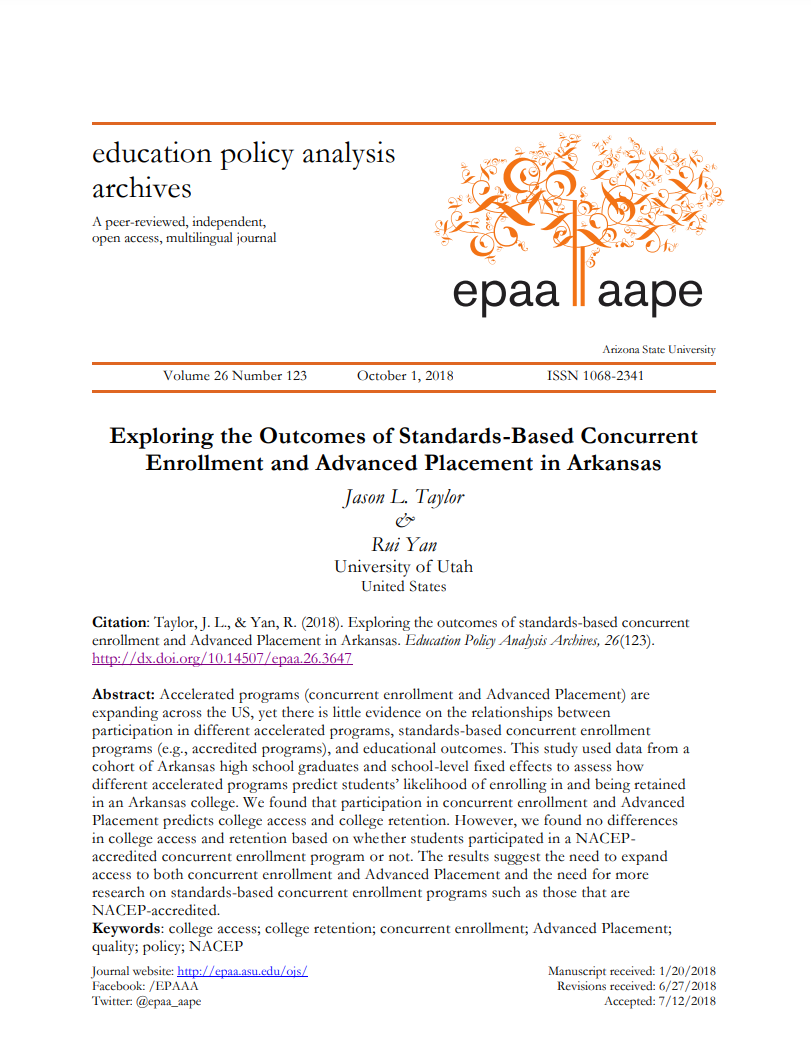Exploring the Outcomes of Standards-Based Concurrent Enrollment and Advanced Placement in Arkansas
Author(s): Jason L. Taylor, Rui Yan
Publisher: Education Policy Analysis Archives
Year: 2018
Access Publication*Subscription Required
Description
MILLIONS OF AMERICANS have attended college, accruing significant amounts of college credit, without ever receiving a college credential that appropriately recognizes their learning and effort. In 2015, there were more than 35 million such Americans aged 25 years and older, a group widely recognized as having “some college, no degree.” Millions of Americans enter higher education with the expectation of completing a degree, yet nearly one in five leave empty-handed after investing considerable time and resources, and amassing substantial debt. Labor economists project that by 2020, 65 percent of all U.S. jobs will require a college education, thus the higher education system must take greater responsibility for helping the “some college, no degree” population finish what they started and get back on the pathway to economic and social prosperity. Despite labor market demands for a more educated workforce and engaged citizenry, nearly all states are currently below the college attainment levels needed to fill these future jobs.

